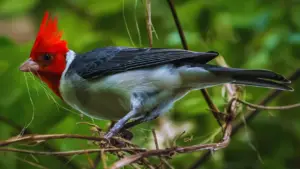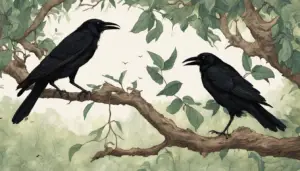The Cardinal family is a treasure trove of diversity, with each member boasting unique characteristics and features. From the iconic Northern Cardinal to the exotic Vermilion Cardinal, these birds captivate us with their beauty and charm. Let’s dive into the types of Cardinals and uncover the unique characteristics of each species. From the iconic red plumage of the Northern Cardinal to the striking crests of the Red-crested Cardinal, explore the wide array of Cardinals found across the globe and appreciate their individual beauty.
Key Takeaways
- Cardinals are a diverse group of birds with a wide range of appearances, songs, and behaviors.
- They have strong beaks that allow them to crack open seeds and consume fruits and insects.
- Cardinals are known for their melodious songs, which can be heard throughout the day.
- They form strong family bonds and are monogamous, with both parents participating in feeding and caring for their children.
Northern Cardinal
The Northern Cardinal is a stunning bird that brings a vibrant burst of color to its surroundings, captivating both birdwatchers and nature enthusiasts alike. With its striking red plumage and distinctive crest, it is impossible to miss this beautiful creature. Found in North America, the Northern Cardinal is a year-round resident in many parts of the United States, making it a familiar sight for many people.
Males of this species are known for their vibrant red feathers, while females have a more subdued reddish-brown color. Both male and female cardinals have black masks around their eyes, adding to their unique appearance. They have strong beaks, which they use to crack open seeds and eat fruits and insects. Their melodious songs can be heard throughout the day, as they communicate with other cardinals in their territory.
Northern Cardinals are monogamous birds, forming strong pair bonds that can last for several years. They build their nests in dense shrubs or trees, using twigs, grass, and leaves. The female lays around three to four eggs, which she incubates for about two weeks. Once the eggs hatch, both parents participate in feeding and caring for the young.
In conclusion, the Northern Cardinal is a magnificent bird that adds a splash of color to any landscape. Its striking appearance, melodious songs, and strong family bonds make it a favorite among bird enthusiasts.
Vermilion Cardinal
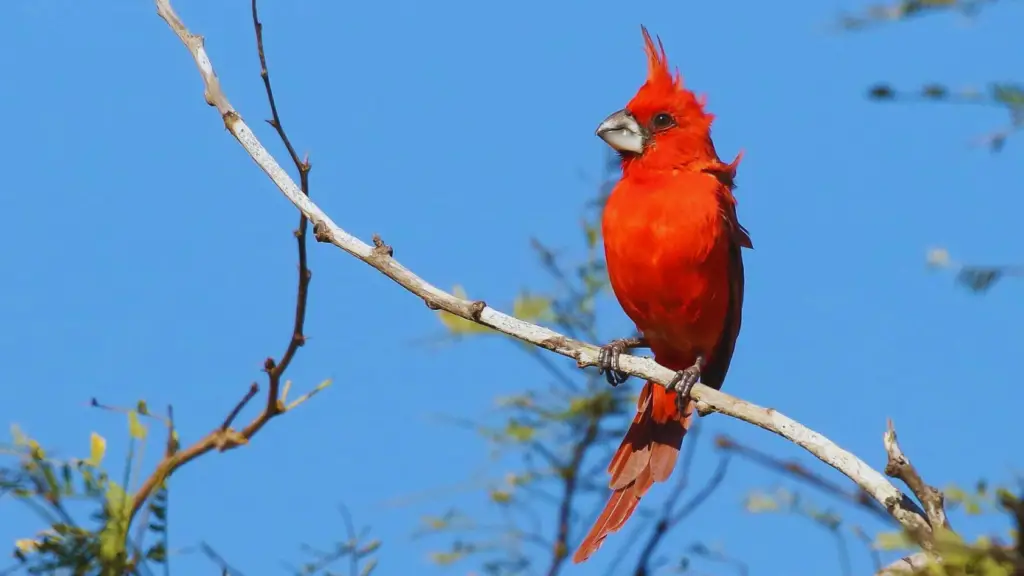
Despite concerns about its bright red color, the Vermilion Cardinal is a fascinating bird to study. Its vibrant plumage is a sight to behold, and its behavior is equally captivating. Here are four interesting facts about the Vermilion Cardinal:
- Habitat: The Vermilion Cardinal is primarily found in the Caribbean islands, particularly Puerto Rico and the Lesser Antilles. It prefers lush forests and dense vegetation, making it a challenge to spot in the wild.
- Diet: This cardinal species has a varied diet consisting of fruits, seeds, insects, and nectar. Its strong beak allows it to crack open tough seeds and extract tasty insects from crevices.
- Breeding: The Vermilion Cardinal is monogamous, forming long-lasting pair bonds. The female builds a cup-shaped nest using twigs and leaves, and both parents take turns incubating the eggs. Once the chicks hatch, both parents contribute to feeding and raising them.
- Conservation status: Unfortunately, the Vermilion Cardinal is listed as a near-threatened species by the International Union for Conservation of Nature (IUCN). Deforestation and habitat loss are the primary threats to its population. Efforts are being made to protect its habitat and raise awareness about its conservation needs.
By understanding these aspects of the Vermilion Cardinal’s life, we can appreciate its beauty and contribute to its preservation.
Pyrrhuloxia

A fascinating member of the Cardinal family, the Pyrrhuloxia captivates with its unique appearance and behavior. With its striking red crest, gray body, and distinctive thick, curved bill, this bird stands out among its relatives. Found primarily in the southwestern United States and northern Mexico, the Pyrrhuloxia thrives in arid and desert habitats.
Unlike its close relative, the Vermilion Cardinal, the Pyrrhuloxia has a more subdued coloration. Its gray plumage allows it to blend in with its surroundings, providing camouflage and protection from predators. The male Pyrrhuloxia, however, displays a vibrant red crest and patches of red on its breast and wings, adding a splash of color to its appearance.
In terms of behavior, the Pyrrhuloxia is known for its strong territorial instincts. Males will fiercely defend their nesting sites and food sources, often engaging in aggressive displays to ward off intruders. They are also highly vocal birds, producing a variety of calls and songs to communicate with their mates and establish their presence in the area.
Overall, the Pyrrhuloxia is a remarkable member of the Cardinal family, both in terms of its appearance and behavior. Its unique adaptations to its arid habitat and its striking red crest make it a bird worth observing and appreciating.
Scarlet Tanager
With its vibrant red plumage, the Scarlet Tanager is like a living flame in the forest, catching the eye of birdwatchers and researchers alike. This striking bird, whose scientific name is Piranga olivacea, is a member of the cardinal family and is known for its stunning appearance. The male Scarlet Tanager sports a brilliant scarlet red body with black wings and tail, while the female is more subdued with a yellow-green coloration.
| Male Scarlet Tanager | Female Scarlet Tanager |
|---|---|
| Brilliant scarlet red body | Yellow-green coloration |
| Black wings and tail | Subdued appearance |
The Scarlet Tanager is primarily found in deciduous forests across eastern North America during the breeding season. Its diet consists mainly of insects, spiders, and fruits. During migration, these tanagers can be seen in the tropics of Central and South America. They build cup-shaped nests in the trees, where the female lays around three to four eggs.
Despite its stunning appearance, the Scarlet Tanager can be quite elusive and difficult to spot in the dense foliage. Its beautiful red plumage serves as a form of camouflage, blending in with the red hues of the forest. Birdwatchers and researchers are drawn to this species not only for its beauty but also for its important role in the ecosystem. By studying the Scarlet Tanager, scientists can gain insights into forest health and the impacts of habitat loss on bird populations.
Rose-breasted Grosbeak
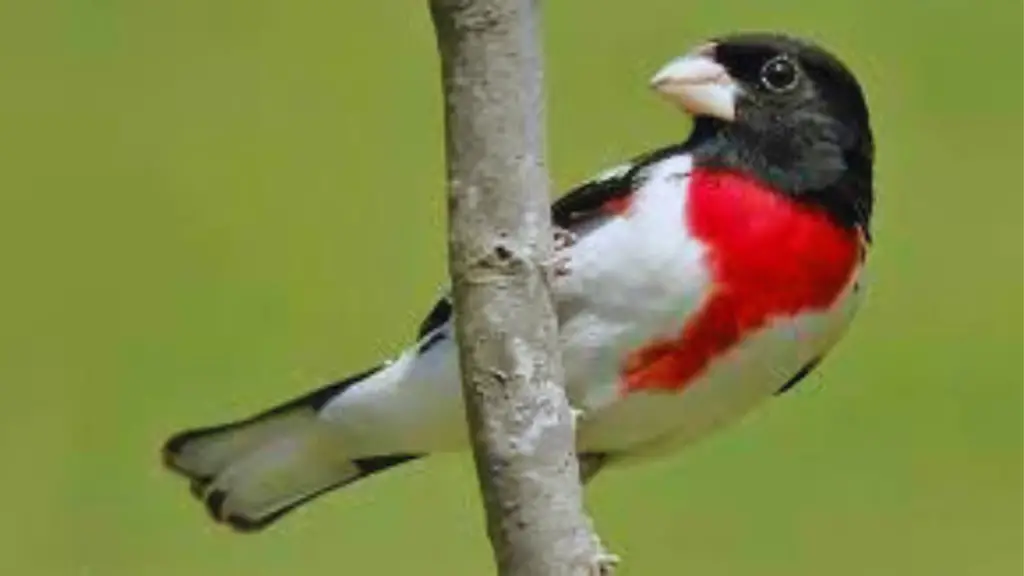
The Rose-breasted Grosbeak is a striking bird with its black and white plumage and a vibrant red patch on its chest.
The males are easily distinguishable from the females as they display bright colors, while the females have a more subdued appearance.
In terms of diet, these grosbeaks primarily feed on insects, fruits, and seeds, using their strong beaks to crack open hard shells.
During the breeding season, the male grosbeaks sing elaborate songs to attract females, and once a pair is formed, both parents take turns incubating the eggs and caring for the young.
Appearance and Sexual Dimorphism
Imagine spotting a vibrant male cardinal with its striking red plumage and contrasting black face mask, while the more subtle female cardinal quietly blends into the surrounding foliage with her warm brown feathers. The appearance of cardinals is one of the most distinctive features of this bird species. Here are three key characteristics that contribute to their unique appearance:
- Plumage: Male cardinals have bright red feathers, which become even more vibrant during the breeding season. Their wings and tail are black, and they have a prominent crest on the top of their heads. In contrast, female cardinals have a more muted appearance, with predominantly brown feathers and a touch of red on their wings and crest.
- Size: Cardinals are medium-sized birds, measuring about 8 to 9 inches in length. Both males and females have a similar body shape, with a strong beak designed for cracking open seeds and fruits.
- Sexual Dimorphism: One of the most interesting aspects of cardinals is their sexual dimorphism. While males display vibrant colors, females have a more camouflaged appearance to protect their nests from predators. This difference in appearance helps them effectively coexist and fulfill their respective roles in reproduction.
Observing the diverse appearance and sexual dimorphism of cardinals adds to the fascination and beauty of these remarkable birds.
Diet and Feeding Behavior
Feeding on a variety of seeds, fruits, and insects, cardinals have a diverse diet that sustains their vibrant plumage and active lifestyles.
As a cardinal, you rely on this diverse diet to meet your nutritional needs. Your beak is perfectly adapted for cracking open seeds and nuts, allowing you to extract the nutritious contents inside.
Additionally, you have a voracious appetite for fruits, such as berries and grapes, which provide you with essential vitamins and antioxidants.
Insects also play a crucial role in your diet, as they are a valuable source of protein. You adeptly catch insects in mid-air or glean them from foliage, showcasing your agility and precision.
With such a varied diet, you are able to maintain your energy levels and vibrant appearance, making you a truly remarkable member of the cardinal family.
Breeding and Nurturing Young
During breeding season, you become a devoted parent, tirelessly tending to your nest and nurturing your young.
As a cardinal, you and your mate work together to build a sturdy nest, usually in a dense shrub or tree.
The female lays a clutch of eggs, typically three to four, and both parents take turns incubating them for about two weeks.
Once the eggs hatch, you and your mate take on the responsibility of feeding and caring for the nestlings.
You diligently search for insects, seeds, and fruits to provide a varied and nutritious diet for your growing chicks.
Your vibrant red feathers and distinctive crest serve as a beacon for your mate and young, making it easy for them to locate you when it’s time for feeding.
You tirelessly feed your chicks until they are old enough to leave the nest, ensuring their survival and the continuation of your cardinal lineage.
Indigo Bunting
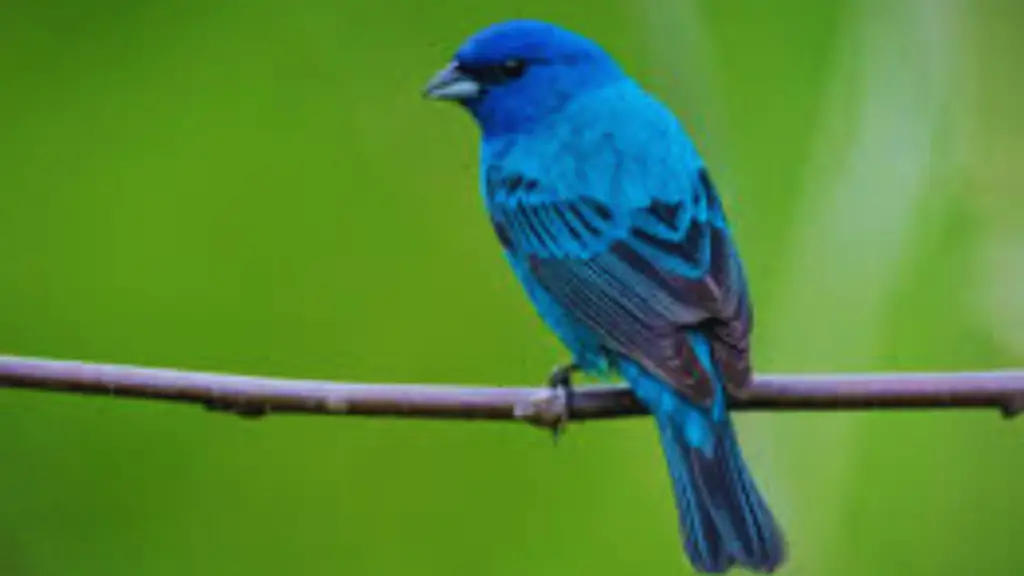
The Indigo Bunting is known for its vibrant blue coloration, which is most striking in adult males during breeding season. They undergo a molt in the fall, replacing their bright blue feathers with duller ones for the winter months.
The males have a melodious song that consists of a series of high-pitched musical notes, which they use to establish territory and attract mates.
Indigo Buntings can be found in a variety of habitats, including open fields, brushy areas, and forest edges, throughout eastern and central North America during the breeding season.
Coloration and Molt
When it comes to the coloration and molt of cardinals, you’ll be amazed by the vibrant hues they display during their molting process. The striking colors of cardinals are a sight to behold, showcasing a brilliant combination of red, orange, and black.
During molting, their feathers shed and are replaced, resulting in a fresh and vibrant plumage. Here are three fascinating facts about their coloration and molt:
- Cardinals undergo a partial molt, where they replace their body feathers but retain their wing and tail feathers.
- Male cardinals have a vibrant red plumage, while females exhibit a more subtle combination of gray and light brown.
- The bright red coloration of male cardinals is a result of their diet, as their feathers contain pigments obtained from the carotenoids present in the food they consume.
Witnessing the transformation of cardinals during their molt is truly a remarkable experience, as their colors become even more vibrant and captivating.
Song and Vocalizations
One fascinating aspect of cardinals is their ability to communicate through song and vocalizations. These beautiful birds have a wide range of vocalizations, each serving a different purpose. For example, male cardinals sing to establish their territory and attract mates, while both males and females use short chirps and calls to communicate with each other and their offspring. The songs of cardinals are known for their clear, whistling notes and melodic phrases. They can sing in a variety of patterns and rhythms, creating a unique song for each individual bird. Additionally, cardinals are known to mimic the songs of other bird species, adding to their diverse repertoire of vocalizations. Through their songs, cardinals not only communicate with each other but also fill the air with their beautiful melodies.
| Song Type | Purpose |
|---|---|
| Territorial | Establishing territorial boundaries |
| Mating Call | Attracting mates |
| Chirps and calls | Communication with other cardinals and offspring |
| Mimicry | Imitating other bird species’ songs |
Habitat and Range
Now that you’ve learned about the melodious songs and vocalizations of cardinals, let’s delve into their habitat and range.
These vibrant birds are known for their adaptability, and you can find them in a variety of habitats across North and South America. From dense forests to urban parks, cardinals have made themselves at home in both rural and urban environments.
Their range extends from as far north as Canada to as far south as Argentina, covering a vast expanse of land. Cardinals are highly territorial, and they establish their territories within these habitats to build nests and raise their young.
So, next time you’re out exploring, keep an eye out for the brilliant flashes of red amidst the trees or perched on a fence, as cardinals can be found in a habitat near you.
Summer Tanager
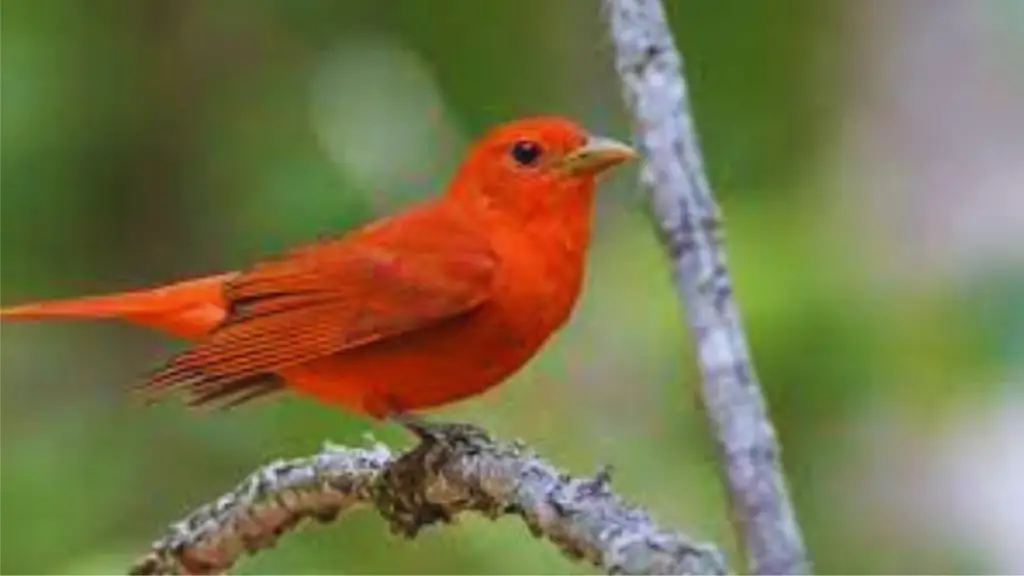
The vibrant plumage of the Summer Tanager will surely leave you in awe. This stunning bird is known for its bright red feathers, which can range from a deep scarlet to a vibrant orange-red. The male Summer Tanager is particularly striking, with its fiery red coloration standing out against the green foliage of its habitat. In contrast, the female Summer Tanager has a more subdued plumage, with a yellowish-green color on its upperparts and a pale yellow underbelly.
During the summer months, these tanagers can be found throughout the southern and eastern parts of the United States, as well as in parts of Mexico and Central America. They prefer to inhabit deciduous forests, where they can easily find their preferred food sources of insects and fruit. The Summer Tanager is also known for its unique feeding behavior. Instead of catching insects in mid-air like other birds, it often perches on a branch and waits for its prey to come within reach.
In addition to its striking appearance, the Summer Tanager is also known for its beautiful song. Its melodic notes can often be heard echoing through the forest during the breeding season. So, if you find yourself in the presence of a Summer Tanager, take a moment to appreciate its vibrant beauty and listen to its enchanting song.
Painted Bunting
With its vibrant plumage resembling a watercolor masterpiece, the Painted Bunting captivates onlookers with its kaleidoscope of blues, greens, and reds. This small songbird, measuring about 5.5 inches in length, is a sight to behold. Here are four fascinating facts about the Painted Bunting:
- Breeding Range: Painted Buntings are found exclusively in North America, primarily in the southern regions, including Texas, Florida, and parts of the southeastern United States. During the breeding season, the males showcase their vivid colors to attract mates.
- Dimorphism: Unlike many bird species, male and female Painted Buntings look strikingly different. While males boast a stunning combination of vibrant hues, females possess a more subdued appearance, with olive-green feathers.
- Migratory Behavior: Painted Buntings are neotropical migrants, spending their winters in Mexico, Central America, and the Caribbean. They embark on long-distance journeys twice a year, covering thousands of miles to reach their breeding and wintering grounds.
- Diet: These colorful birds have a primarily vegetarian diet, feeding on seeds, fruits, and insects. They are known to visit backyard feeders, especially during the winter months, where they can be enticed with sunflower seeds.
The Painted Bunting is a true gem of the cardinal family, showcasing nature’s artistic brilliance through its magnificent colors.
Blue Grosbeak
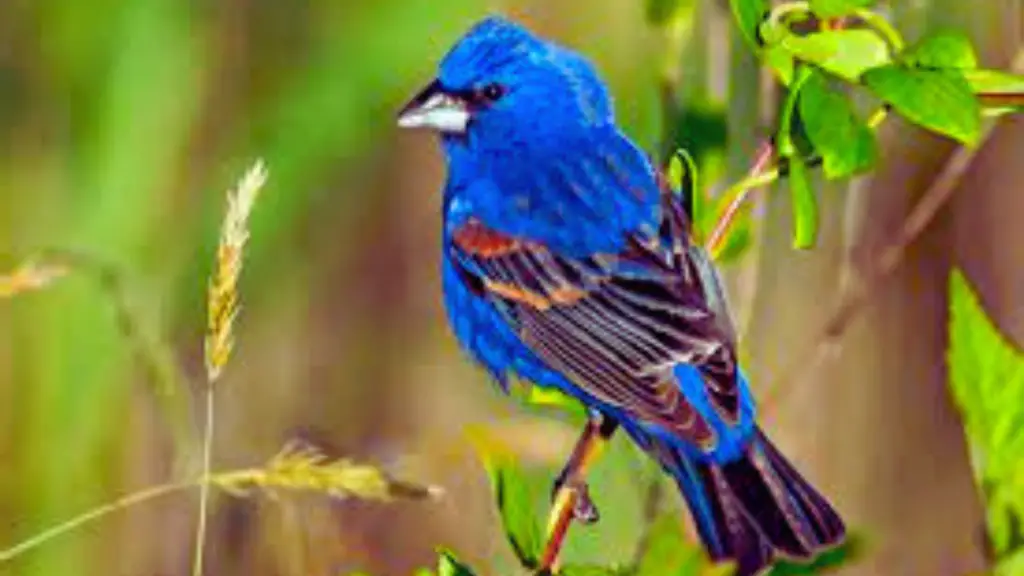
The Blue Grosbeak is a striking bird with deep blue plumage and a large, conical bill. It is slightly larger than a House Finch, measuring about 6 to 7 inches in length.
During breeding season, the male Blue Grosbeak sings a melodious song to attract a mate and defend its territory.
The species is currently listed as being of least concern in terms of conservation status, but its population is declining due to habitat loss and fragmentation.
Physical Characteristics and Size
Prepare to be amazed by the incredible variety of physical characteristics and sizes that cardinals possess! These beautiful birds come in a range of shapes and sizes, each with their own unique features.
Here are some of the fascinating physical characteristics you can find in different types of cardinals:
- Plumage colors: Cardinals can be found in vibrant shades of red, orange, yellow, and black. Some even have blue or purple feathers!
- Crests: Many cardinals have impressive crests on their heads, adding to their distinctive appearance.
- Beak shapes: From short and stout to long and slender, cardinals have a diverse range of beak shapes suited for different feeding habits.
- Body size: Cardinals vary in size, with some species being small and compact, while others are larger and more robust.
- Wing shape: The shape of a cardinal’s wings can vary, affecting their flight patterns and agility.
With such a wide array of physical characteristics, cardinals are truly a remarkable family of birds!
Breeding and Nesting Behavior
Now that you’ve learned about the physical characteristics and size of cardinals, let’s delve into their fascinating breeding and nesting behavior.
Cardinals are monogamous birds, meaning they mate for life. Once they find a partner, they engage in courtship rituals such as singing and offering food to impress their mate.
These vibrant birds build their nests in dense shrubs, trees, or thickets, using twigs, leaves, and grass. The female cardinal takes the lead in constructing the nest, while the male provides her with food.
Once the nest is complete, the female lays a clutch of 2-5 eggs, which she incubates for about two weeks. Both parents share the responsibility of feeding and caring for the chicks until they fledge, which usually takes around 10-12 days.
It’s truly remarkable to witness the dedication and teamwork of these cardinal families.
Conservation Status
Fortunately, the conservation status of cardinals is not cause for alarm, as their population numbers are stable and thriving, bringing a ray of hope to bird enthusiasts around the world. These beautiful birds have adapted well to human-altered landscapes, which has contributed to their success. While habitat loss remains a concern due to urbanization and deforestation, cardinals have shown resilience and are able to thrive in a variety of environments. Additionally, efforts to protect and preserve their habitats have been successful in many regions. The table below provides a visual representation of the conservation status of different cardinal species, indicating their population trends and any associated threats.
| Cardinal Species | Population Trend | Threats |
|---|---|---|
| Northern Cardinal | Stable | Habitat loss, predation |
| Summer Tanager | Increasing | Habitat loss, climate change |
| Vermilion Cardinal | Stable | Illegal pet trade, habitat loss |
| Pyrrhuloxia | Decreasing | Habitat loss, competition with invasive species |
Overall, the conservation outlook for cardinals is positive, but continuous efforts are needed to protect their habitats and address potential threats to ensure their long-term survival.
Black-headed Grosbeak
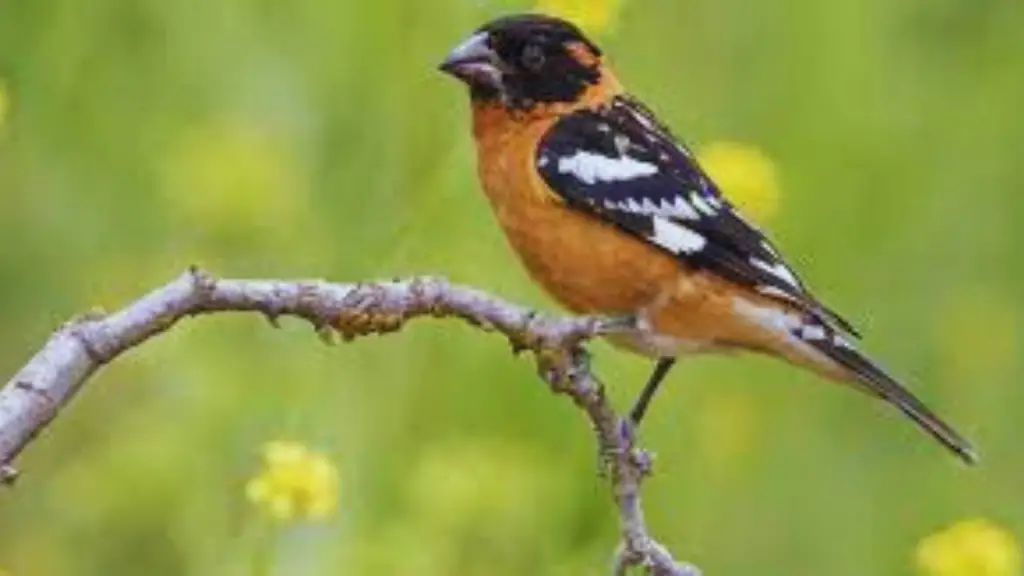
The Black-headed Grosbeak, with its striking black head and vibrant orange breast, adds a touch of color and elegance to the cardinal family. This beautiful bird is known for its melodious song and can be found in the western parts of North America.
Here are three interesting facts about the Black-headed Grosbeak:
- Migratory Behavior: The Black-headed Grosbeak is a migratory bird, spending its summers in North America and winters in Mexico and Central America. It embarks on an impressive journey, traveling thousands of miles each year to reach its wintering grounds. This remarkable migration pattern showcases the bird’s adaptability and survival skills.
- Feeding Habits: The Black-headed Grosbeak has a diverse diet, feeding on a variety of insects, fruits, and seeds. It uses its strong, cone-shaped beak to crack open seeds and extract their nutritious contents. This adaptation allows the bird to thrive in different habitats and seasons.
- Breeding Rituals: During the breeding season, the male Black-headed Grosbeak puts on a spectacular courtship display. It sings from high perches to attract a mate and defends its territory with aggressive behavior. Once a pair is formed, the female builds a cup-shaped nest using twigs, grass, and other plant materials. The male assists by bringing food to the female while she incubates the eggs.
The Black-headed Grosbeak is a fascinating member of the cardinal family, showcasing its beauty, adaptability, and unique behaviors.
Thick-billed Cardinal
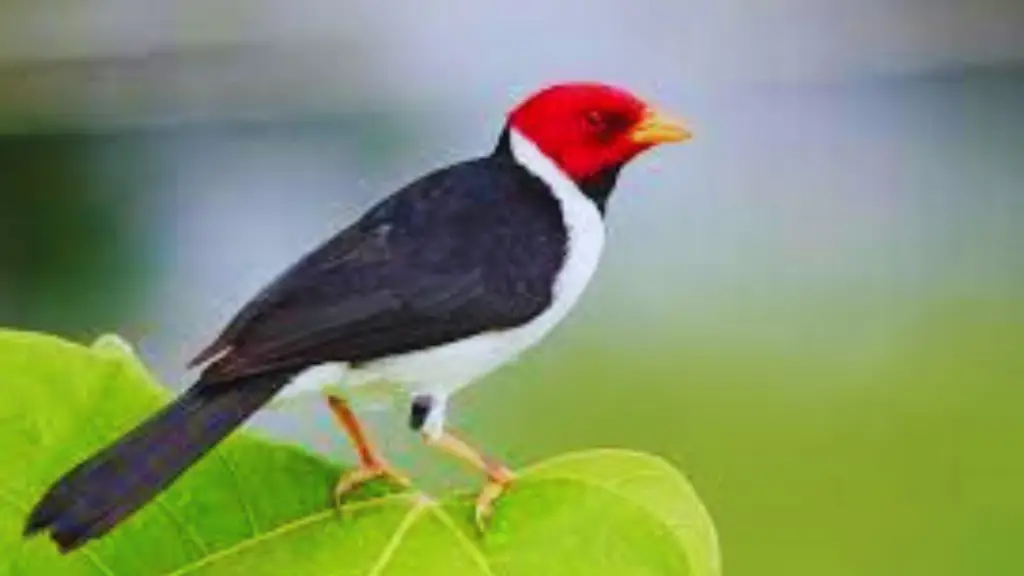
The Thick-billed Cardinal is an intriguing species known for its adaptations to harsh environments. These birds have developed unique physiological and behavioral traits that allow them to thrive in extreme conditions such as deserts or high altitudes.
When it comes to nesting and breeding habits, Thick-billed Cardinals are highly adaptable, building their nests in various locations and showing flexibility in their breeding seasons.
However, despite their ability to adapt, these birds face challenges due to habitat loss and human disturbance, making their population and conservation status a concern that needs attention.
Adaptations to Harsh Environments
Braving the harshest of conditions, cardinals have evolved remarkable adaptations to survive in extreme environments. In their quest to thrive in harsh environments, cardinals have developed unique strategies that set them apart from other birds. Here are some of their remarkable adaptations:
- Physical adaptations: Thick plumage: Cardinals have dense feathers that provide insulation against the cold and help them retain heat.
- Strong beaks: Their robust beaks enable them to crack open tough seeds and nuts, which are often their primary food sources in harsh environments.
- Vocal communication: Cardinals have distinct songs that serve as territory markers and help them find mates in sparse populations.
- Strategic feeding: They are opportunistic feeders and will search for food in various places, including the ground, shrubs, and trees.
These adaptations not only enable cardinals to survive in extreme conditions but also showcase their resilience and ability to thrive in the face of adversity.
Nesting and Breeding Habits
Surviving in extreme conditions requires more than just physical adaptations; nesting and breeding habits play a crucial role in the resilient nature of cardinals.
When it comes to nesting, female cardinals are the primary architects. They construct their nests using twigs, leaves, grass, and even paper or plastic materials. These nests are typically built in dense shrubs or trees, providing protection from predators and harsh weather.
Male cardinals, on the other hand, play a vital role in defending the nesting territory and providing food for the female during incubation. Once the eggs are laid, both parents take turns incubating them until they hatch.
The young cardinals are then fed a diet consisting of insects and seeds, ensuring their growth and survival. It is through these nesting and breeding habits that cardinals are able to thrive in various environments, showcasing their adaptability and resilience.
Population and Conservation Status
Now that you understand the nesting and breeding habits of cardinals, let’s dive into another important aspect of their lives – their population and conservation status.
As you may know, cardinals are widely distributed across North and South America, making them one of the most common and recognizable birds in the region. Their vibrant red plumage and beautiful songs have made them a favorite among birdwatchers and nature enthusiasts.
However, despite their seemingly large population, cardinals face various threats to their survival. Habitat loss, pesticide use, and climate change all pose significant challenges to these magnificent birds.
Conservation efforts are crucial in ensuring the continued existence of cardinals and protecting their habitats. By supporting conservation initiatives and raising awareness about the importance of preserving biodiversity, we can contribute to the well-being of these remarkable creatures.
Types of Cardinals: Frequently Asked Questions
What is the average lifespan of a Northern Cardinal?
The average lifespan of a northern cardinal is around 3 years. However, some individuals have been known to live up to 15 years.
Do Vermilion Cardinals migrate during the winter months?
Yes, vermilion cardinals are like winter’s elusive dancers, gracefully migrating during the colder months. They embark on a journey, seeking warmer skies and leaving behind a longing for their vibrant presence.
How does the diet of a Pyrrhuloxia differ from that of other Cardinals?
The diet of a pyrrhuloxia differs from other cardinals by including more seeds and fruits. They also eat insects and occasionally nectar. This variety in diet helps them adapt to their desert habitat.
Are Scarlet Tanagers commonly found in urban areas?
Scarlet tanagers are not commonly found in urban areas. They prefer forested habitats with tall trees. Their bright red color and unique songs make them a beautiful sight in the wild.
What is the primary habitat of the Rose-breasted Grosbeak?
The primary habitat of the rose-breasted grosbeak is deciduous forests. They prefer wooded areas with a mix of open spaces and dense vegetation, making them difficult to spot but rewarding to find.
Types of Cardinals: Conclusion
So there you have it, a closer look at the diverse types of cardinals in the avian world. From the vibrant red plumage of the Northern Cardinal to the striking blue of the Blue Grosbeak, these birds are truly a sight to behold.
But did you know that out of all the cardinals mentioned, the Painted Bunting is the most colorful of them all? With its stunning combination of bright blue, green, and red feathers, this little bird is like a living rainbow, adding a burst of color to any landscape it inhabits.






